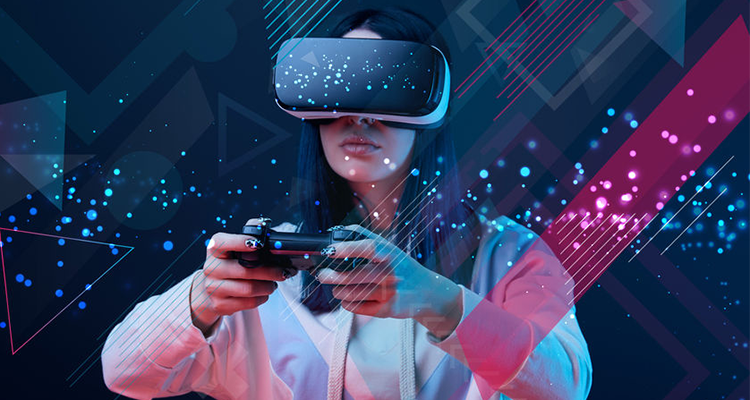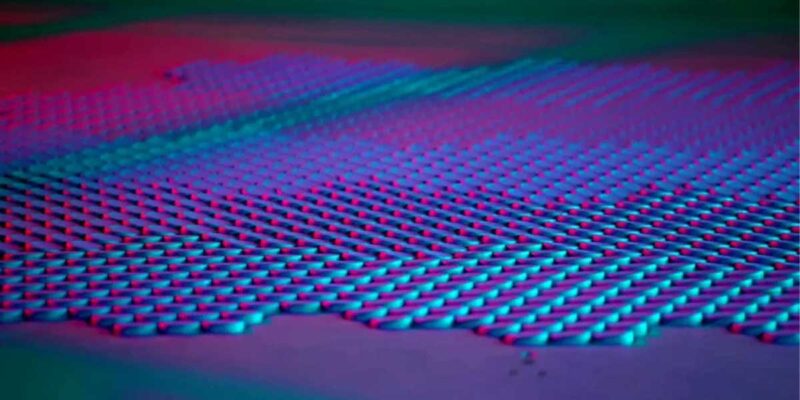The Built Environment

Many of us (if not all of us) who work in AV-based technologies have a co-dependent relationship with the built environment. Suppose you’re unclear of what the built environment is, I’ll sum it up quickly. In that case, it references the designed architecture and sculpted living environment that surrounds us and has been built by us, the people — humans. This can include buildings, cities, roads, urban landscapes, and so on. Although 3D printing and many other tools help us build and sculpt these environments, they’re no less the creation of human thought, conceptualizing and building practices performed by people.
However, nowadays, we have a new swath of technology coming on the horizon — if it’s not already in your living room or studio. Either way, I’m sure you’ve heard of augmented reality (AR), virtual reality (VR), mixed reality (MR), immersive audio, spatial audio, ATMOS and so on. All these don’t necessarily depend on the built environment to connect and function with users or people. But instead, create an alternate universe or reality within a digital world. AR blurs that line but ultimately is still creating something virtual for those who use it.
It’s a very fascinating revolution in audiovisual technologies. These have really forced the concept and question of, “how can we leverage the built environment and the virtual environment to have harmony and well-being with a real human connection?” Granted, these MR technologies are mostly single-user experiences within the real-world context. Still, they are often multiuser in the virtual world, for this is a virtual interaction built in a virtual environment for a virtual experience.
So, where does this leave us? Well, the reality is MR leaders have been questioning the relevance of display screens with the uptake in MR tech. Recently, many key players in the AR/VR/MR markets have dropped new hardware and software apps that make creating experiences easier and more engaging. The creations coming out of these platforms is genuinely astonishing. They pave the way for new and advanced concepts within many AV sectors like wayfinding, signage, gaming, information, advertising, live event, experiential design, public engagement, etc.
The pandemic has brought on these technology advancements quickly — they seem to have garnered broad appeal throughout 2020. Maybe because people are at home and need an alternate reality to travel to when reality locks them out. With good reason, these technologies are playful and can unlock our imagination — just play Moss with a VR headset and tell me you didn’t find it magical.
But I think, even though the sizzle of the MR steak is so good — and I mean really good — especially in our current global situation, we can’t forget the relationship to our built environments (even though sometimes it’s easy to overlook). We sometimes look around, and we don’t actually see. Maybe we just don’t appreciate all these built things that live around us, made by us. Tall buildings, sculpted hills and plantings, roads that bend and curve and layer up like brush strokes on a canvas.
We’ve seen the realization of engineering feats for the beauty and strength of timeless design and an attempt to create something transgenerational that connects people to the environment they’re living in. It’s incredible what we’ve achieved, and it gives us history and relevance in the real world. Yet, most people sit in the bus or car and stare at their phone, the stranger biting their nails a couple of seats up, or the ground. Maybe they hold up the phone for a picture, or, as we’ve seen with Pokemon Go — to look through the looking glass into an AR world. Then we go home and into a room, turn on a tablet, watch a movie, read an article or strap on a VR headset and do some gaming. Sometimes, we find eating might get forgotten, although snacking, well, it never seems to get overlooked. So, where am I going with this?
Well, I feel like we are on the cusp of an architectural renaissance with audiovisual and low-voltage technologies as the medium. This renaissance, I think, is partially due to the rise of creative technology advances and innovations in our AV sector and, more so, the potential of its harmony within the context of the built environment.
Whether projection mapping on a building or integrated screens in creative fashions, reactive tracking and AI content translations incorporate a larger story into the public domain. There’s a sense of harmony and connection in all of it. Now, we can layer on virtual realities, triggers and explanations to anyone who leaps down the rabbit hole. But it doesn’t make the real world less.
In a lot of ways, architecture and technology have an inherent symbiotic relationship. Both, when working together, create something extraordinary, really impactful that couldn’t exist without the other. These concepts couldn’t have even existed beyond conception a millennia ago, let alone 20 years ago. It’s new, barely evolved through hindsight. It’s a natural evolution, and we owe it to find mutual benefits and open more extensive dialogue. We owe it to engage our emotional sensibilities and really connect to one another and our built lived environments in unified harmony — what a great experience.
As we move forward, instead of considering the built environment and the virtual environment as mutually exclusive, we need to engage inclusively. How do we allow these contributing disciplines to work together, find a seat at the table and work toward a symbiotic relationship? How can we create something beautiful and timeless — AND leverage technology into the built environment in a meaningful way? How do we find the design language to translate our complex technological concepts to teams that can build them?
These are all complex questions that will most likely find a beautifully refined and straightforward outcome after complex thought. For now, these are the challenges that hopefully can drive us to the next great human experience within our built environment, and I, for one, am all in!





